October 16, 2020
The Culinary Citizenship of Peshawar’s Pulao
Changing political climates in Afghanistan pushed millions of refugees into Pakistan. And in about four decades, they ended up changing the Pakistani foodscape.
Words By Manzoor Ali
Photography by Abdul Majeed
“When man migrates, he carries with him not only his birds, quadrupeds, insects, vegetables, and his very sword, but his orchard also.”
— Henry David Thoreau, Wild Apples
Namak Mandi, or Salt Market, is one of the many unassuming streets of Peshawar in northwestern Pakistan. Before Partition, when caravans from Afghanistan, Central Asia, and the Indian subcontinent converged on the city, this street, which then fell just outside the walled city, was where the travelers unloaded their merchandise of rock salt, dry fruits, and exotic spices.
These days, a casual walk down this overcrowded street is a struggle; one has to jostle to keep oneself from the deluge of rickshaws, motorbikes, cars and people. Namak Mandi is now considered the city’s main food street, and offers the arguably best barbecued lamb and karahi in Pakistan.
In the early 1980s, the same street witnessed another culinary transformation as Afghan refugee chefs who had fled the Soviet invasion of Afghanistan set up their shops and started selling qabuli pulao. The business of pulao—a rice dish cooked with large pieces of buffalo meat, thinly-chopped carrots, and raisins—skyrocketed due to patronage of a growing number of refugees who were arriving in the city in large numbers. Around this time, about 150,000 refugees were arriving in Pakistan each month, according to a UNHC official, and Peshawar absorbed the majority of this influx.
I meet Gul Mohammad at his grocery store toward the end of the Namak Mandi where he is standing behind the counter cleaning rice. Mohammad, who migrated to Pakistan just after the Soviet invasion of Afghanistan, was barely thirty years old when he arrived in Peshawar along with his wife; he’s now seventy. I interrupt him to talk about his life as a pulao chef in the city.
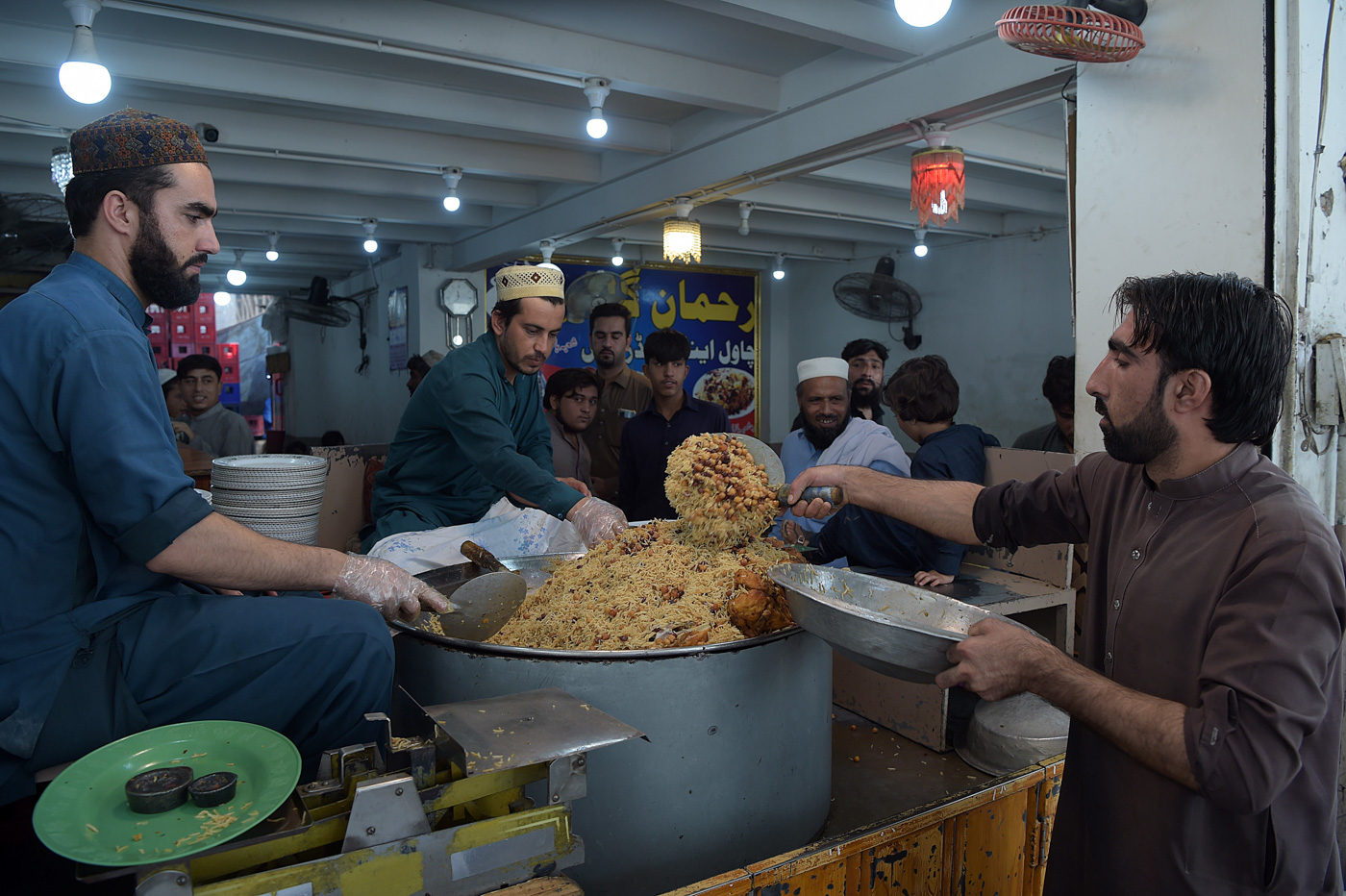
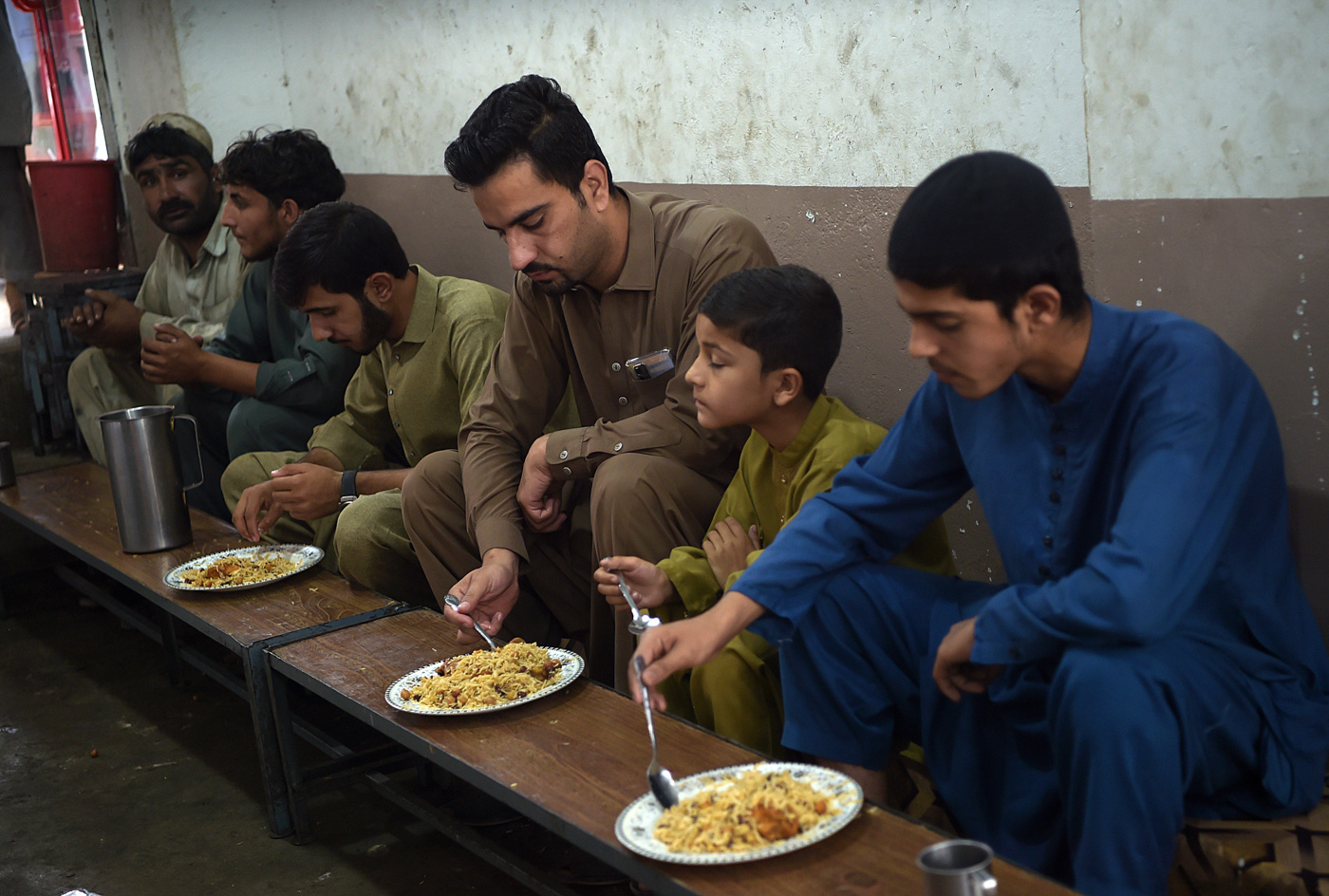
When I mention names of the long-deceased pulao chefs, a glint of familiarity appears in his eyes and he invites me inside his crowded shop. I sit over a half-empty sack of sugar and he runs outside to bring a cup of qehwa (green tea). A couple of minutes later, he returns with drops of sweat glistening on his wrinkled forehead, carrying a tray with two small cups and a little green pot.
He first rinses the cups with a dash of steaming tea before filling the two cups, and we begin chatting in the suffocating summer afternoon. “When I arrived here, Haji Jalal, a refugee who belonged to Kanduz in northern Afghanistan, had already set up a pulao eatery at some distance from here,” Mohammad points outside in the afternoon afternoon haze.
Mohammad is from Mazar Sharif, the regional hub of northern Afghanistan, and lives in a rented home at the nearby Dabgari area. He dabbled in the famed Afghan carpet business initially, but quickly incurred heavy losses. “The Mujahideen commanders used to borrow several pieces of carpet at a time, but never bothered to pay,” he says. They would sell or gift these carpets to others.
When this heavy-handedness of Mujahideen became unbearable, Mohammad stopped selling carpets and instead turned to pulao. “Since I belong to Mazar and people there know how to cook good pulao, therefore, it was natural for me to turn to cooking,” he says.
Mohammad’s pulao eatery is located opposite his grocery store, and is among the oldest surviving eateries in the city. Many closed after their owners died of age, while others returned to their homelands to pick up pieces of their war-shattered lives.
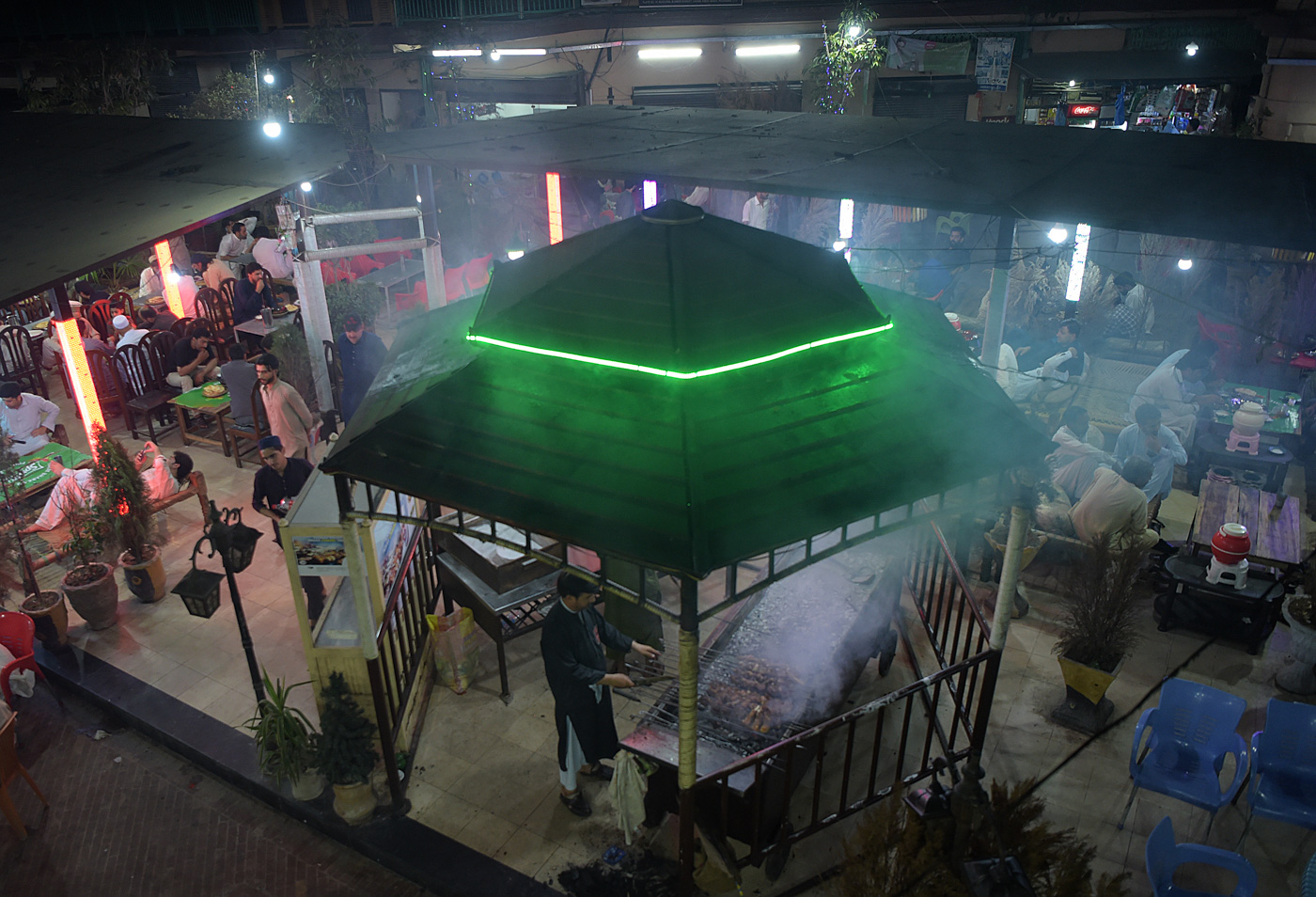
In the cases of prominent chefs Haji Jalil, Libas Khan, and Haji Zaheer in Namak Mandi, their businesses closed after their deaths. Sadar ud Din, who ran a restaurant on Cinema Road, was killed in a suicide attack.
Sadar ud Din, one of the finest pulao chefs in the city, was killed along with four other members of his family when a suicide bomber targeted his Marhaba restaurant in May of 2007. More than twenty diners were killed when the bomber struck the densely-packed restaurant in one of the oldest parts of the city. Mohammad never returned to Afghanistan after that attack, and raised his family in Pakistan.
Dr. Muhammad Taqi, a United States-based doctor and columinst for The Wire in India, who is also from old Peshawar, agrees that qabuli pulao is a late arrival to city. “In the 1980s, Dari- and Uzbeki-speaking Afghan refugees set up large and small restaurants across Peshawar,” Taqi says.
He tells me that in Peshawar, its citizens always had chana mewa pulao with meat, which is essentially a mass-produced pulao variety eaten during various occasions, especially religious ceremonies and commoretaions. But for weddings and other special occasions, it’s common practice for Pishoris to often eat meat pulao without mewa (raisins) and chana (chickpeas), Taqi says, adding that it is typically served on a traditional tray called khwancha. “It was eaten with chana dal or split chickpea lentil cooked with meat, which the locals used to call qorma,” he explains.
He also recalls that Haji Lali was one of the most famous chefs from Peshawar, who mastered all local cuisine in the 1960s through 1970s; he was also invited to cook for the last Afghan king, Mohammed Zahir Shah, as well as the Afghanistan cultural festival Jashn-e-Kabul. However, “I cannot recall Haji Lali ever cooking qabuli pulao,” he says, adding that only after Afghan chefs popularized the dish, it made its way to the household menu.
Popularity of qabuli pulao in Peshawar and elsewhere across Pakistan is a recent phenomenon, it fits into a larger pattern. For centuries, invadings armies, trading caravans, and adventurers have crossed the narrow Hindu Kush mountain range between the Central Asian highlands and the Indian subcontinent, and in doing so they have also shaped Peshawar and the wide region’s diverse cultural and culinary tapestry.
American agricultural ecologist Gary Paul Nabhan in his book, Cumin, Camels and Caravans: A Spice Odyssey, noted that pulao was “the quintessential meal of Central Asia’s segment of Silk Road, from Baghdad through Bukhara and Samarkand to Dushanbe and Kabul.”
In a fascinating account of how pulao origins could be traced to the earliest introduction of rice to the region, the ecologist also narrates how it cut through social and religious divides of the region. “It is embraced by both the Bukharan Jews and the Ismaili Muslims of Badakhshan and was no doubt held in high esteem by the Zoroastrians of the region,” he explains in his book.
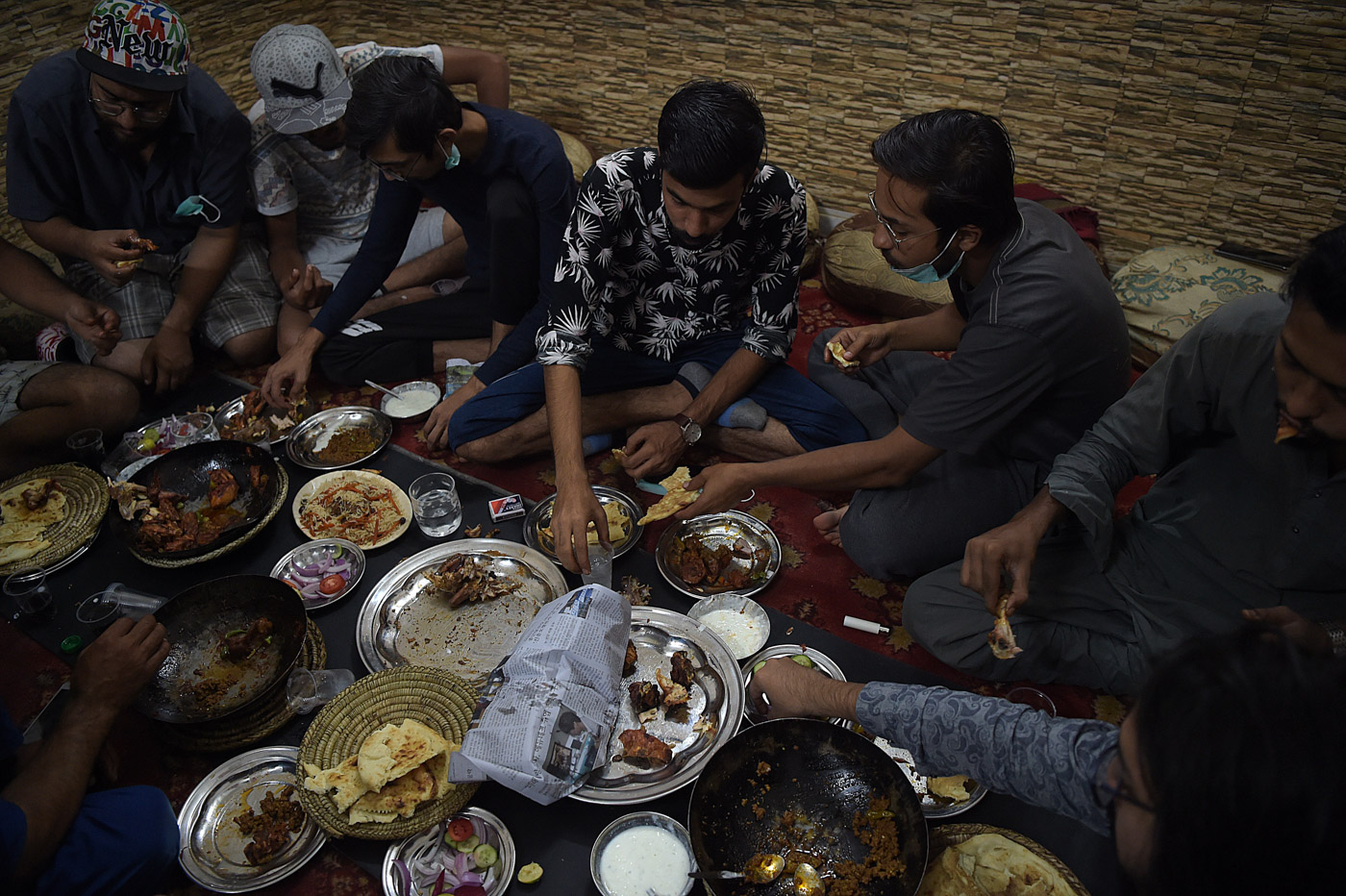
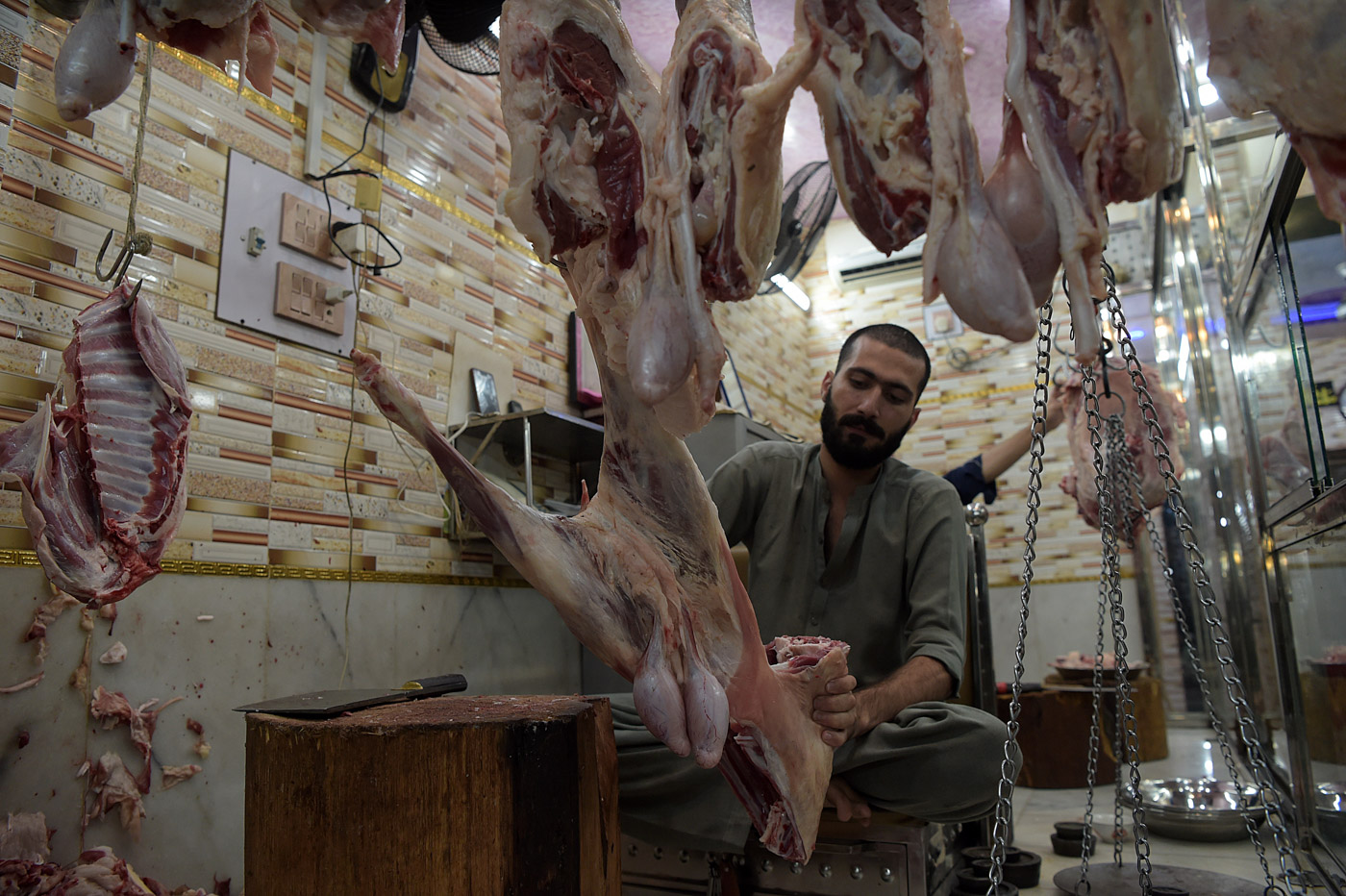
“In the fourth century BCE, Alexander the Great and his troops became so taken with Bactrian and Sogdian pilafs that they reportedly took the preparation back with them from the Sogdian capital of Marakanda (present-day Samarkand) to Macedonia,” Nabhan further notes.
However, Nabhan traces the first proper pulao recipe to Persian polymath Avicenna. “Because of his enormous influence, Ibn Sīnā is considered by many culinary historians to be the father of modern pilaf preparation,” he says.
Thus pulao emerges not only as connecting the old and new worlds, but also the broken geographies of the region. Peshawar, which is now at the heart of this culinary transformation has been under the purview of four different rulers in the past two centuries. The city served as Afghanistan’s winter capital until 1835, when the Sikh kingdom of Punjab wrested control from the brothers of the first Barakzai king, Dost Mohammad Khan. Although violent, the Sikh rule was also short-lived; in 1849, Peshawar came under British sway, which continued until the forming of Pakistan in 1947.
It is also intriguing that despite Peshawar remaining the summer capital of Afghanistan and Afghan royals living in the city, there is little or no mention of qabuli pulao in colonial or recent writings about the city’s foodscape. In addition, Peshawar was a main hub on trading routes of the region and people frequenting between Indian subcontinent and Central Asia would stay in its inns and eat in its restaurants. This transitory favor made Peshawar an ideal space for a diverse culinary tradition.
Or perhaps the pulao was here, but Afghan influences disappeared under the Sikh and British rule. Ali Awais, a research associate at the Gandhara Hindko Board, also believes qabuli pulao was a late entrant to Peshawar’s food landscape. “I have not read about qabuli pulao being a part of Peshawar culinary tradition in colonial as well more recent writings,” Awais says.
He tells me that the local variety of pulao, called chana mewa pulao, was the traditional dish of the city and was cooked on major occasions. “They were the Afghan refugees who brought qabuli pulao to the city,” he explains.
Chana mewa pulao is still cooked for major occasions in Peshawar; however, chana mewa is less common at restaurants as compared to its qabuli variant. One reason could be cost, as qabuli pulao contains a larger portion of meat; it is not economical to cook it for large gatherings.
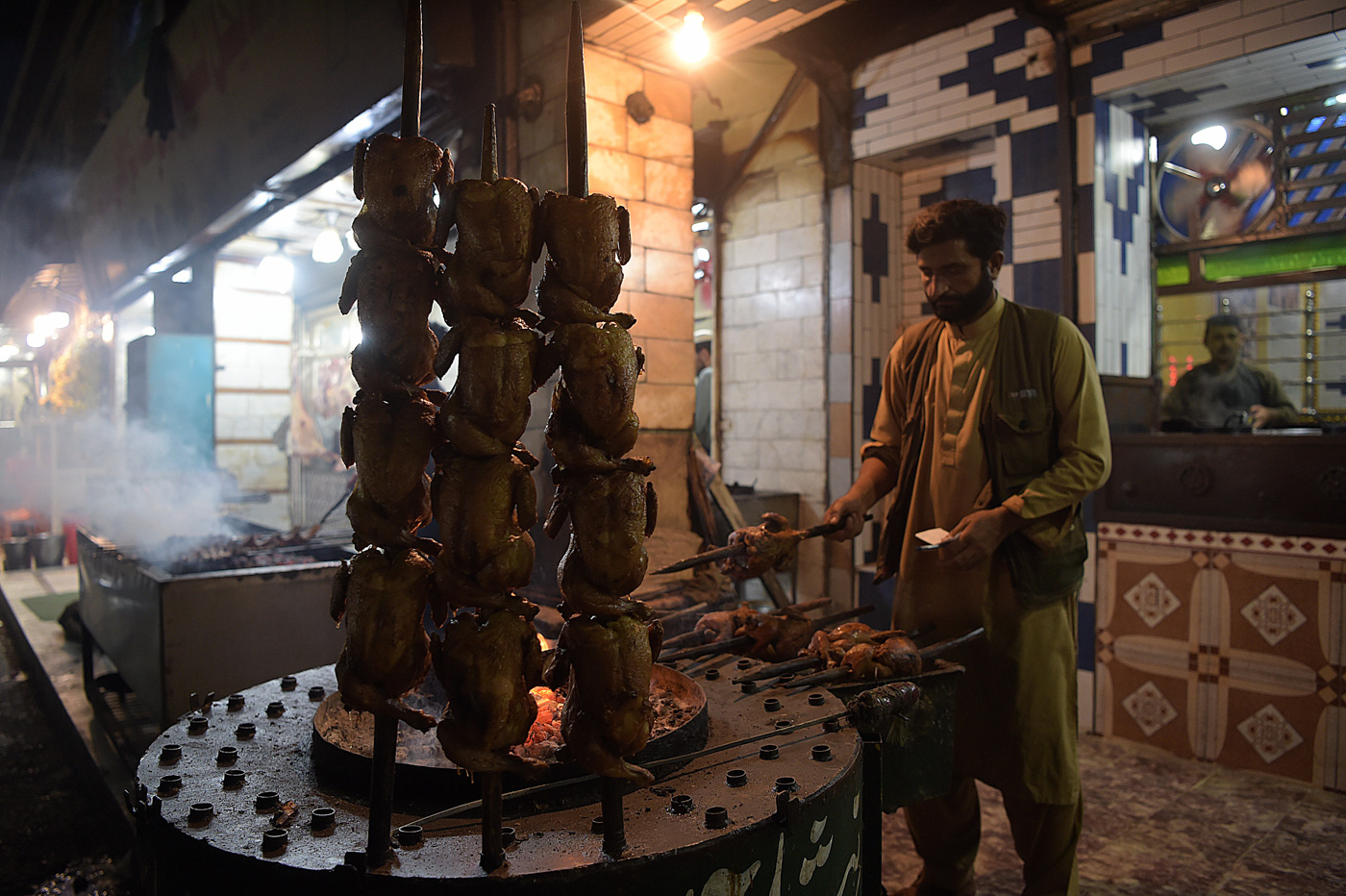
The Afghan refugees who entered Peshawar after 1979 transformed the palate and entire foodscape of not just a city, but an entire country. Aside from pulao, they also brought mantu (dumplings), kebabs, Afghan ice cream called sheer yakh, and varieties of bread, as well as other culinary innovations. Starting with Peshawar in the early 1980s, this dish migrated to other parts of Pakistan over the years, and now there is hardly a place in a nation of 220 million without a pulao eatery.
In her book, Culinary Fictions: Food in South Asian Diasporic Culture, Annita Mannur writes about “culinary citizenship,” in which, “the desire to remember home by fondly recreating culinary memories cannot be understood merely as reflectively nostalgic gestures; rather, such nostalgically framed narratives must also be read as a metacritique of what it means to route memory and nostalgic longing for a homeland through one’s relationship to seemingly intractable culinary practices which unflinchingly yoke national identity with culinary taste and practices.”
For refugees, perhaps it was both a matter of survival, as well the need of belonging to land they had left behind. Their culinary exploits not only provided an anchor to lean against during financial distress, but also a linkage to their lost past, traditions and culture.
Although many, like Gul Mohammad, lost their physical relationship with their native villages. But by clinging to their culinary idiom, they recreated some semblance of their homeland in their homelessness.






Our comments section is for members only.
Join today to gain exclusive access.